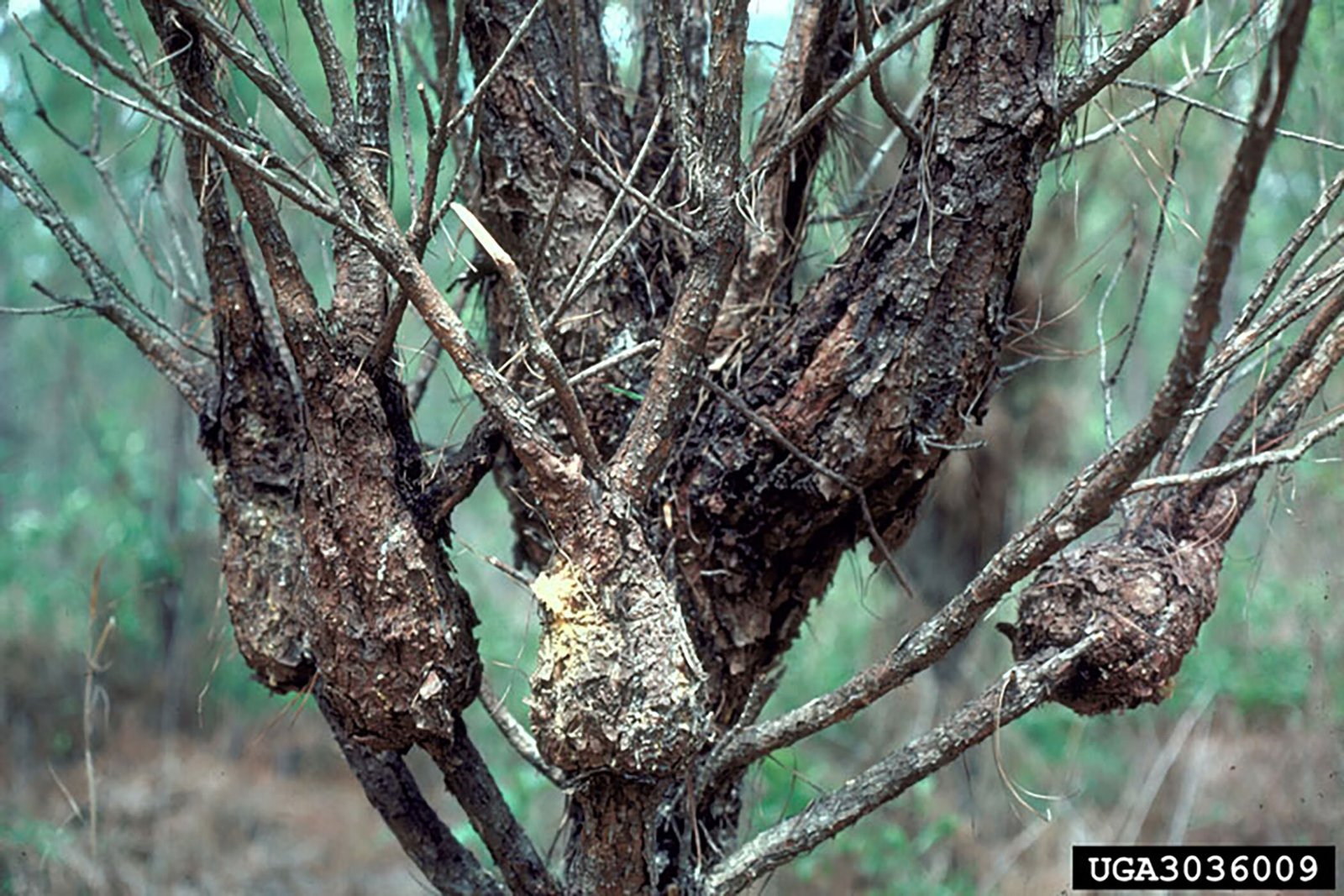
New models developed by University of Georgia researchers may help guide the fight against rust disease, according to a new study. The paper is published in the journal Forest Ecology and Management.
Fusiform rust is one of the costliest diseases in the timber industry and is especially damaging to the loblolly pine. The disease causes deformities that cause the wood to be unusable, and severely damaged trees are often culled.
Even if the tree is not culled, the disease increases the risk for further damage and limits its growth.
The researchers studied how climate and genetic factors interact to shape the likelihood of disease in loblolly pines across the Southeast. They used that data to visually show where fusiform rust is most likely to be found.
These new hazard maps may explain up to 93.1% of the deviance observed in the model.
“In the Southeast here, we grow mostly loblolly pine, which is a very important species for making things like plywood,” said Simone Lim-Hing, lead author and postdoctoral research associate at UGA’s Warnell School of Forestry & Natural Resources. “Almost every timber product is made from loblolly, so this is a huge economic problem.”
Having more up-to-date maps could help manage the spread of fusiform rust in loblolly pines and reduce the losses faced by growers.
Climate and genetics key factors in disease distribution
Hazard maps are an important tool in disease management, serving as a guide on where to plant trees bred to be resistant to fusiform rust. However, many of the previous maps are outdated.
“Before we were just saying disease was here, so disease is going to be here,” said Lim-Hing. “But the models that we’ve made from this publication show that there’s way more to the story than just historical disease data.”
Previous models didn’t account for how climate and genetics interact to alter a pine’s risk for disease. So researchers found a way to include these factors in their models.
The new maps were based on a generalized additive model, which let researchers study the relationships between multiple variables. It examined factors such as available water and temperature and illustrated their impact on disease outcomes.
Two separate maps were generated: one for a family of disease-resistant pines and one group of nonresistant trees. The maps show which areas are predicted to have the highest risk of rust disease for both groups.
Areas where rust disease is more common would benefit from resistant trees, the researchers said. In areas that are less vulnerable, growers can prioritize other traits instead.
“Sometimes you have to forgo that genetic advantage if the tree doesn’t grow as tall or it doesn’t grow as straight,” said Lim-Hing. “So there are these trade-offs just because of the way that genetics works, especially in trees.”
Climate could impact disease spread
As climate factors change, so too does the relationship between loblolly pines and fusiform rust. Variables such as precipitation and temperature can impact both the tree and the disease it hosts.
Previously, models were more static, relying on what has already happened to predict future disease distribution. But with changing weather patterns, new models need to be more fluid to account for it.
Lim-Hing hopes that this model will let people take a more dynamic look at disease.
“We definitely took it more from a pathological point of view rather than a timber management point of view,” she said. “It’s important be aware of the biology.”
This study was co-authored by Kamal J.K. Gandhi and Caterina Villari of UGA’s Warnell School of Forestry and Natural Resources. Additional co-authors include Cristián R. Montes, Trevor D. Walker and M. Nasir Shalizi.
More information:
Simone Lim-Hing et al, Enhanced fusiform rust hazard maps for loblolly pine: Incorporating genotype and climate to predict disease, Forest Ecology and Management (2024). DOI: 10.1016/j.foreco.2024.122158
Provided by
University of Georgia
Citation:
New hazard maps may predict rust disease in loblolly pine trees (2024, September 26)
retrieved 26 September 2024
from https://phys.org/news/2024-09-hazard-rust-disease-loblolly-trees.html
This document is subject to copyright. Apart from any fair dealing for the purpose of private study or research, no
part may be reproduced without the written permission. The content is provided for information purposes only.
